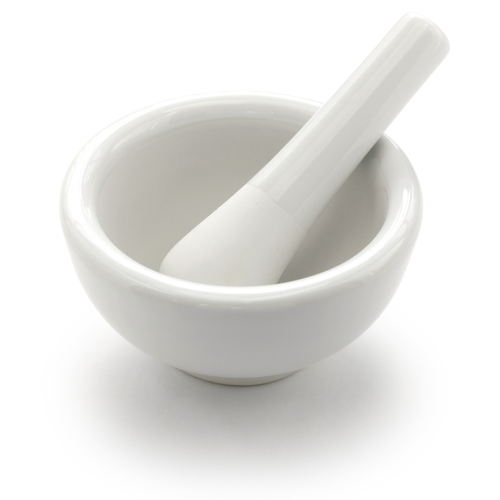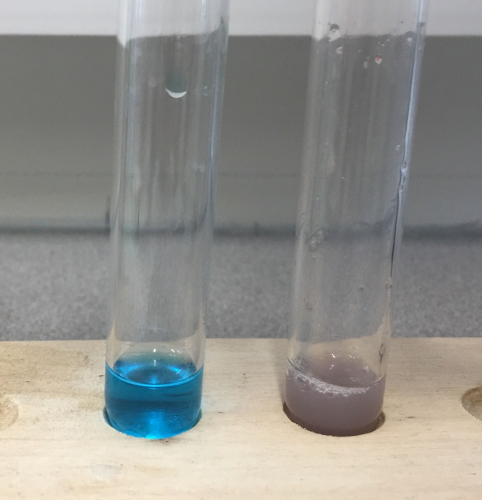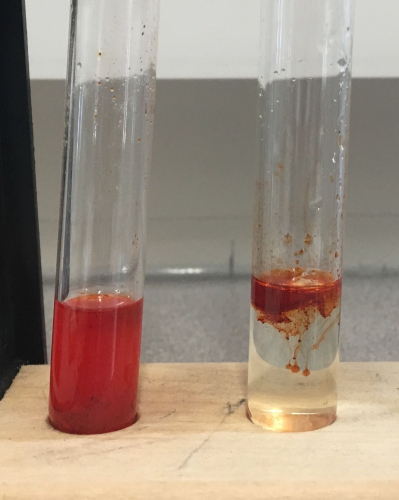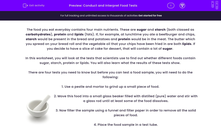The food you eat everyday contains four main nutrients. These are sugar and starch (both classed as carbohydrates), protein and lipids (fats). If, for example, at lunchtime you ate a beefburger and chips, starch would be present in the bread and potatoes and protein would be in the meat. The butter which you spread on your bread roll and the vegetable oil that your chips have been fried in are both lipids. If you decide to have a slice of cake for dessert, that will contain a lot of sugar.
In this worksheet, you will look at the tests that scientists use to find out whether different foods contain sugar, starch, protein or lipids. You will also learn what the results of these tests show.
There are four tests you need to know but before you can test a food sample, you will need to do the following:
1. Use a pestle and mortar to grind up a small piece of food.

2. Move this food into a small glass beaker filled with distilled (pure) water and stir with a glass rod until at least some of the food dissolves.
3. Now filter the sample using a funnel and filter paper in order to remove all the solid pieces of food.
4. Place the food sample in a test tube.
Test for starch
1. Add a few drops of iodine (this is orange) to the test tube.
2. If the liquid in the test tube changes to black or blue-black, then starch is present - if there is no colour change it means that the food sample does not contain starch.

Test for sugar
1. Add about 10 drops of Benedict’s solution to the test tube with your food sample in.
2. Place the test tube into a water bath set at 75°C and leave for 5 minutes.
3. Use the information below to find out the amount of sugar in your food sample.
Stays blue = No sugar
Green = Trace amount
Yellow = Moderate amount
Brick-red = Large amount
Test for protein
1. Add a little biuret solution (this is blue) into the test tube with your food sample and shake gently to mix.
2. If the liquid in the test tube changes to purple, then protein is present.

Test for lipids
The method used for testing for lipids is slightly different. Choose the food that you wish to test and grind it up using a pestle and mortar. Pour it into a beaker filled with distilled water and stir. Do not filter this time.
1. Fill a test tube with the food sample.
2. Add a few drops of Sudan III stain solution (this is a bright red colour) and shake the tube gently.
3. If the food sample contains lipids, two layers will form. A bright red layer will form at the top of the test tube. If the food sample does not contain lipids, the liquid in the test tube will remain one colour and no layer will form.

The food tests can be summarised in a table:
|
Nutrient |
Name of test |
Positive result |
Negative result |
|
Starch |
Iodine |
Changes from orange to black or blue-black |
Stays orange |
|
Sugar |
Benedict’s solution |
Changes from blue to green (trace amount), yellow (moderate amount) or brick-red (large amount) |
Stays blue |
|
Protein |
Biuret solution |
Changes from blue to purple |
Stays blue |
|
Lipid |
Sudan III stain |
Two layers form and the top layer is bright red |
No layers form |
Now let's have a go at some questions.








